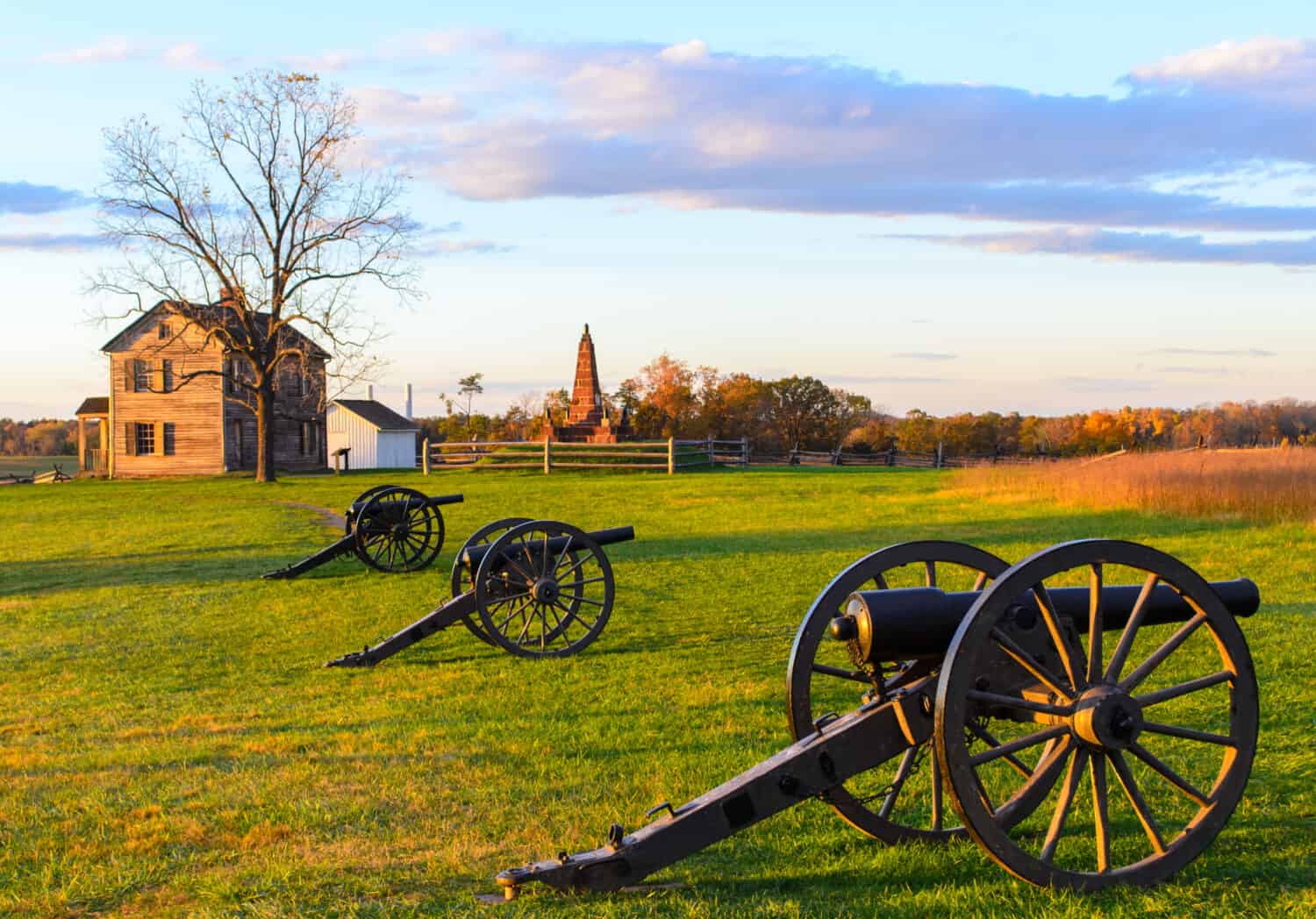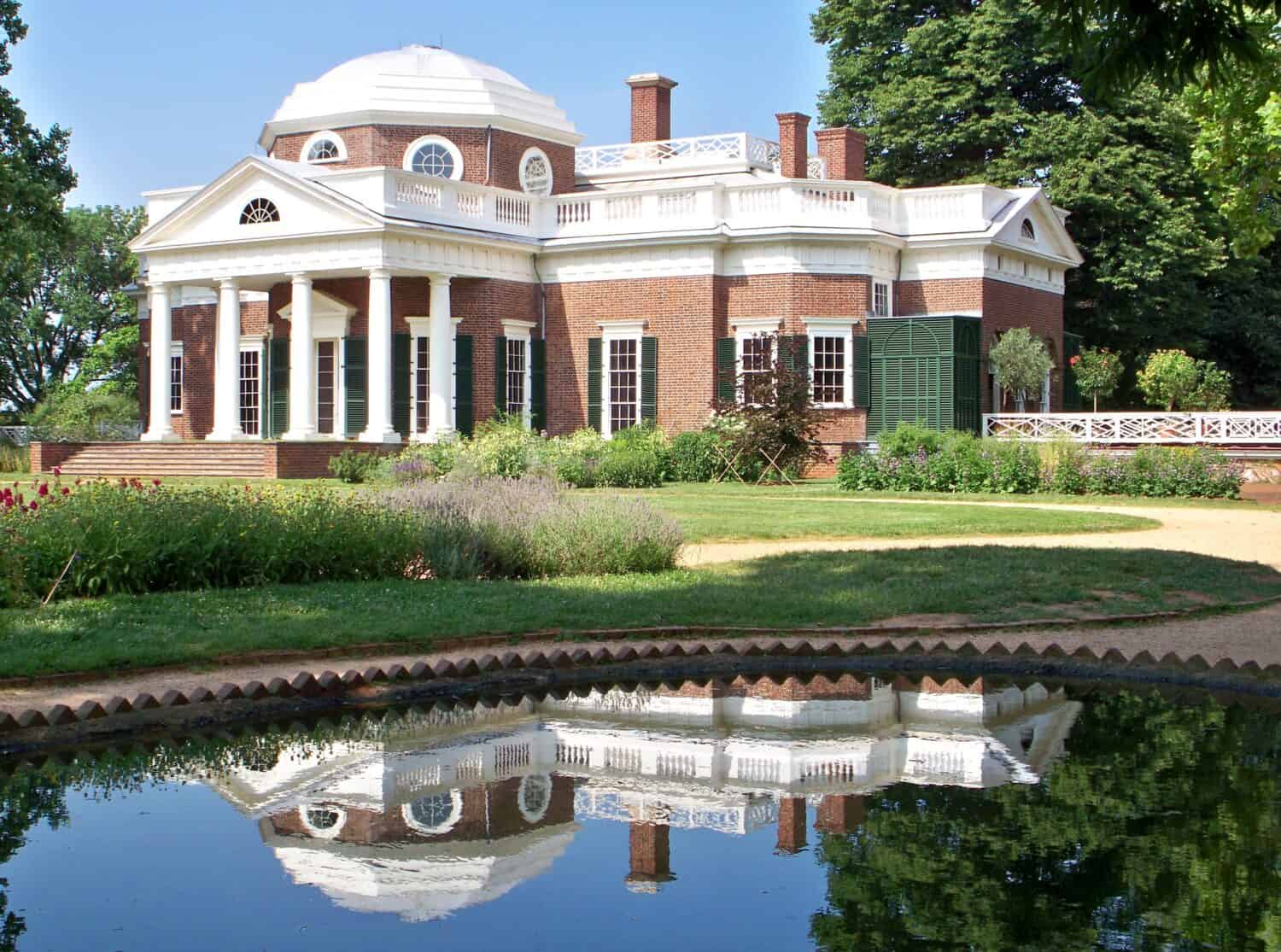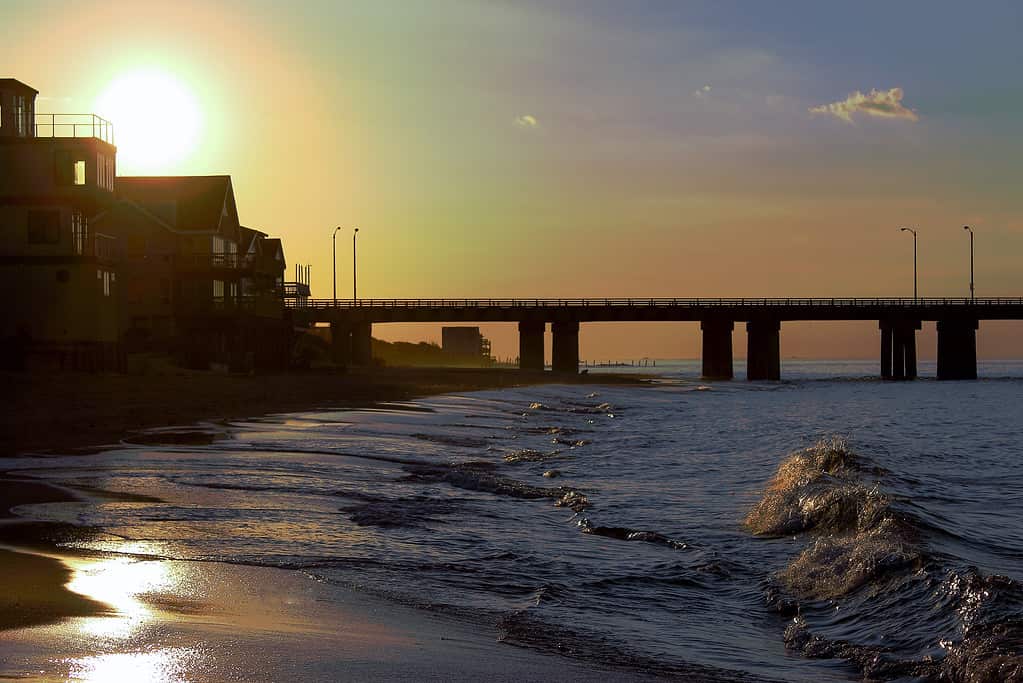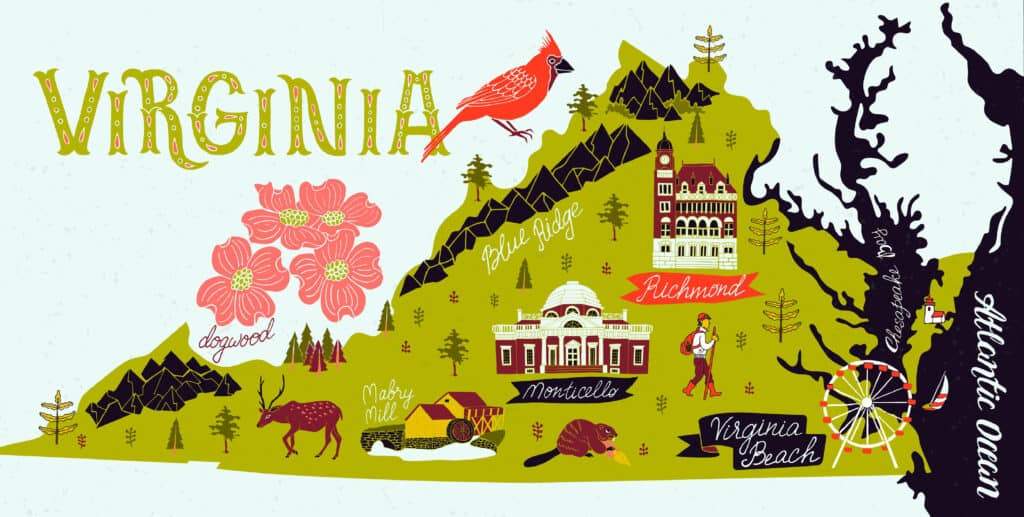With a key role in the founding of the United States as well as various points in the country’s history, Virginia is a prominent state on the East Coast. Due to its proximity to the nation’s capital in Washington, D.C., Virginia is home to many government organizations and top industry headquarters. Southeastern Virginia boasts maritime industries, including fishing, maritime shipping, and the largest U.S. Naval Base in the country. Western parts of the state are much more agricultural.
Virginia is roughly 400 miles from east to west at its widest point. The state is roughly shaped like a triangle and the east-west distance in Northern Virginia is much narrower than in the southern part of the state. With such a diverse landscape, it is no wonder that the “Old Dominion” is a popular place for outdoor lovers to visit. It is also popular with history buffs who want to learn more about the early days of the nation.
History of Virginia
Native American tribes lived in this area for generations. Although the earliest histories of these tribes do not survive, modern historians do know that the Algonquian peoples were some of the most prominent, which included Chief Powhatan and his daughter Pocahontas. Other tribes included Nottoway and Meherrin tribes, which both spoke Iroquois-based languages, and Tutelo tribes on the border of Virginia and West Virginia, who spoke Siouan languages.
Virginia was one of the original 13 colonies. It is also home to some of the earliest permanent settlements of colonists. Jamestown, founded in 1607, was one of the first and best-recorded interactions between English settlers and Native American tribes. While these encounters inspired contemporary versions (like the Disney movie), the realities were far more gruesome than most stories depict. Trade and partnership between the two groups existed in the beginning but were overshadowed by conflict and fighting. Disease and starvation were also big threats to early settlers.
The settlement at Jamestown was eventually burned by angry colonists who didn’t approve of the leader’s handling of the conflict with the Native Americans. The capital later relocated to Williamsburg before eventually moving to Richmond many years later. Years of fighting and turmoil began, with the French and Indian War and the American Revolution both taking a toll on the colonists and early residents of the newly formed country of America.

Visitors to Jamestown can learn more about what life was like for early American settlers in Virginia.
©Kathy Clark/Shutterstock.com
Gaining Independence
Virginia and its residents, particularly the wealthy landowners, played key roles in the formation of the United States. Many notable Virginians were leaders of the country, including George Washington, Thomas Jefferson, James Madison, and Patrick Henry. During this time, the state relied heavily on enslaved people both for its agriculture-based economy and to ensure that it remained a powerhouse of voting power in the new government. During the American Civil War, slave labor was a major issue and Virginia was right in the middle of major conflicts and battles. The state voted to secede from the United States and join the Confederacy, which was later defeated during the Civil War.
Following the Civil War and the emancipation of enslaved people, Virginia continued to be a hot spot for the national government. Unfortunately, racism and segregation continued to impact the culture in the state and nationwide, something that is still a struggle today. Many cities in Virginia changed drastically after the Civil War and were important during Reconstruction and the fight for civil rights.

Manassas Battlefield Park in Virginia has artifacts and exhibits from the Civil War.
©Zack Frank/Shutterstock.com
Historic Sites in Virginia
There are numerous historic sites around the state that show just what life was like as Virginia developed into the state it is today. You can also tour famous battlefields and the homes of some of the state’s most influential figures.
George Washington’s home at Mount Vernon is now a museum and historical site that hosts visitors who want to learn more about the founding father and first President. You can tour the mansion as well as visit the grounds and outbuildings to learn about life as a plantation farmer in pre-revolution America. Thomas Jefferson’s home at Monticello is a similar location. The University of Virginia also has many buildings designed or inspired by Thomas Jefferson, its founder.

Thomas Jefferson’s home Monticello is open to visitors.
©Bruce Ellis/Shutterstock.com
Geography of the State
Virginia is in the Mid-Atlantic region of the United States’ east coast. It is roughly halfway down from the northern part of the US and the Southern part, located along the Atlantic Ocean. It was considered a Southern state during the Civil War and seceded to join the Confederacy. Its northern neighbor, Maryland, did not. This proximity to the border states resulted in Virginia being a major player in both armed conflict and political negotiations.
The state is bordered to the north by Maryland and West Virginia. Washington, D.C. is also adjacent to Virginia. North Carolina and Tennessee are to the south. Kentucky is directly west of Virginia. To the east is the Atlantic Ocean. The various regions of Virginia are heavily influenced by their neighbors. For example, Northern Virginia just outside of Washington, D.C. and Maryland is urban and home to many companies and organizations that support and work with the national government. Western Virginia, on the other hand, is much more rural and closely aligned with its neighboring West Virginia and Kentucky.
The Chesapeake Bay is a major maritime location in Virginia. It is the largest estuary in the U.S. and extends up the state’s coast into waters near Maryland. Not only is this a major shipping route, but it is also home to some of the most unique marine life in the world. It is also the location of the famous Chesapeake Bay Bridge Tunnel.

Chic’s Beach in Virginia Beach is on the Chesapeake Bay.
©Brandon Gray/Shutterstock.com
Overall Size of Virginia
Virginia covers 39,490 square miles. This equates to 102,279 square kilometers. It is the 36th largest state and comparable to Kentucky in overall size. Virginia could fit inside Alaska, the largest state at around 586,000 square miles, almost 15 times!
Virginia was much larger when it was a colony. It was named in honor of Queen Elizabeth I, often referred to as the “Virgin Queen.” At that time, the state covered what is now Kentucky, West Virginia, Indiana, and Illinois. It also included parts of Ohio and Pennsylvania.

Amidst historical landmarks and natural wonders, Virginia has many wonderful spots for bird-watching.
©Stellar_bones/Shutterstock.com
Wildlife in Virginia
Even though it has a long history of settlement, Virginia also boasts plenty of natural landscapes and protected areas for wildlife. Black bears, white-tailed deer, foxes, raccoons, and squirrels can be seen in many parts of the state. Black bears tend to prefer less populated areas. Fortunately for them, there are plenty of forests, especially in the western parts of the state. If you see a black bear, make sure to give it some space. Like all wild animals, it’s best to observe from a distance and not engage.
Most of the forested areas in Virginia have a combination of deciduous and evergreen trees. Oak, cedar, spruce, poplar, pines, and others are common throughout the state. Some areas have greater concentrations of particular species based on their climate and ecosystem.
Shenandoah National Park in Virginia is a must-see for outdoor enthusiasts. It includes 197,438.76 acres in the Blue Ridge Mountains. The famous Appalachian Trail goes through this area as well. The Virginia big-eared bat is the state bat of Virginia and comes out at night to eat.
Birds in Virginia include small songbirds, such as robins, cardinals, finches, and jays. Larger birds, such as hawks, eagles, and herons are also at home in this state. Coastal Virginia is also home to a herd of wild ponies that live and graze at Chincoteague National Wildlife Refuge.

A Virginia big-eared bat (Corynorhinus townsendii virginianus) female in the early spring photographed during a cave survey.
Thank you for reading! Have some feedback for us? Contact the AZ Animals editorial team.








